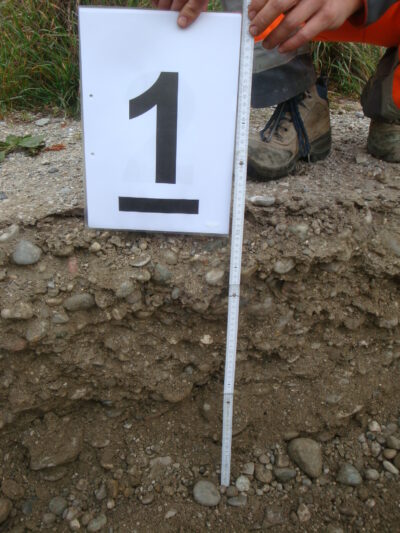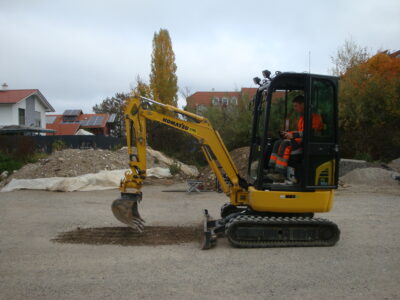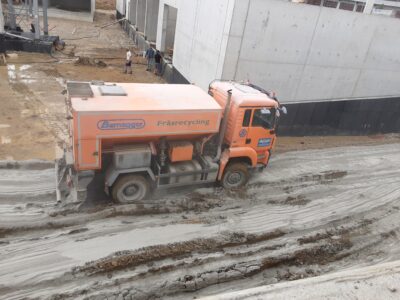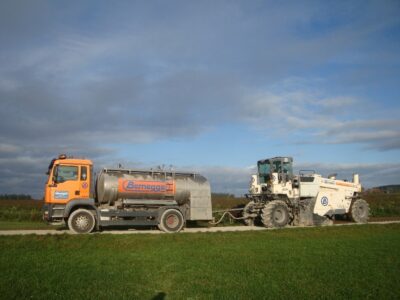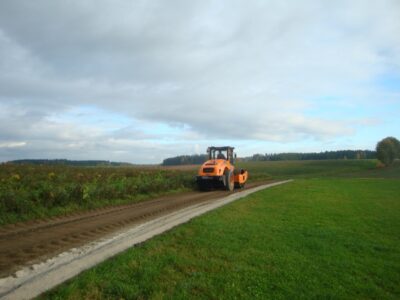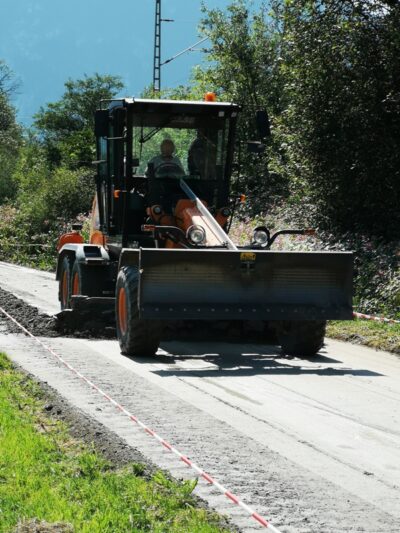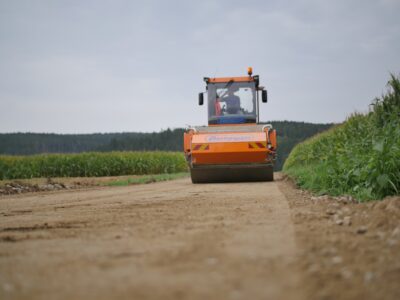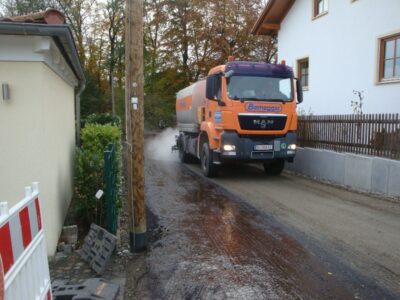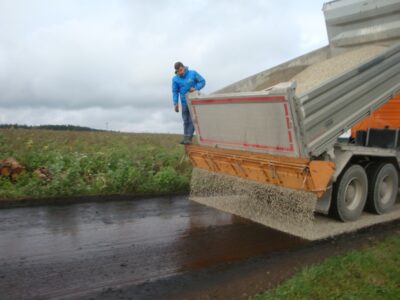NANOTECHNOLOGY IN CIVIL ENGINEERING
Mode of functioning
In combination with cement and nanopolymer, the respective material reacts on site and becomes a very stable, yet elastic layer. The correct mixing ratio as well as professional processing are decisive factors.
Work steps
Layer structure
4 – 6 cm top layer
20 – 30 cm nanopolymer-modified cement stabilisation
Existing substrate


